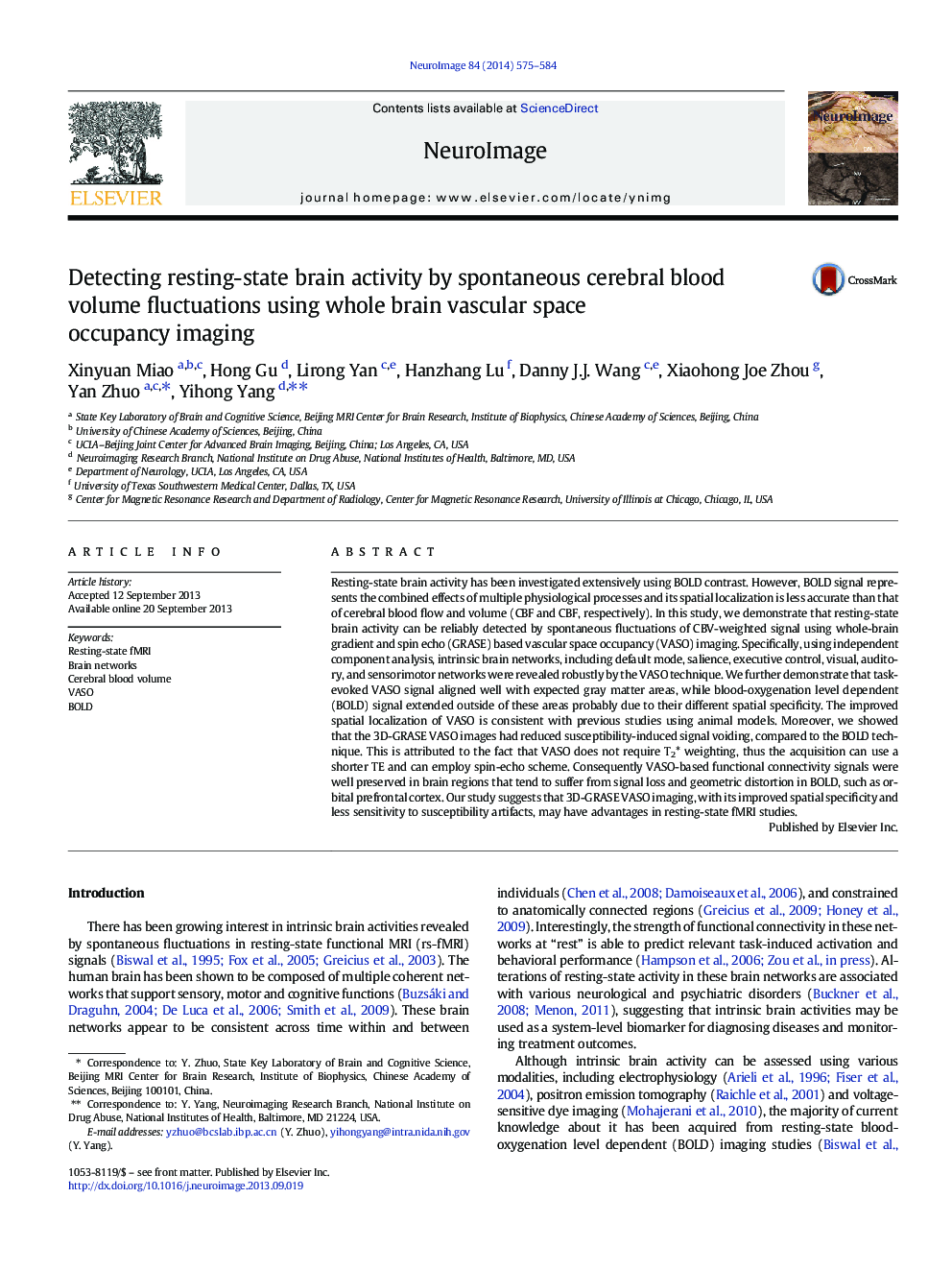| کد مقاله | کد نشریه | سال انتشار | مقاله انگلیسی | نسخه تمام متن |
|---|---|---|---|---|
| 6028538 | 1580920 | 2014 | 10 صفحه PDF | دانلود رایگان |
- CBV-based resting-state fMRI
- Intrinsic brain networks detected by 3D-GRASE-VASO imaging
- Improved functional connectivity in the orbital prefrontal cortex
Resting-state brain activity has been investigated extensively using BOLD contrast. However, BOLD signal represents the combined effects of multiple physiological processes and its spatial localization is less accurate than that of cerebral blood flow and volume (CBF and CBF, respectively). In this study, we demonstrate that resting-state brain activity can be reliably detected by spontaneous fluctuations of CBV-weighted signal using whole-brain gradient and spin echo (GRASE) based vascular space occupancy (VASO) imaging. Specifically, using independent component analysis, intrinsic brain networks, including default mode, salience, executive control, visual, auditory, and sensorimotor networks were revealed robustly by the VASO technique. We further demonstrate that task-evoked VASO signal aligned well with expected gray matter areas, while blood-oxygenation level dependent (BOLD) signal extended outside of these areas probably due to their different spatial specificity. The improved spatial localization of VASO is consistent with previous studies using animal models. Moreover, we showed that the 3D-GRASE VASO images had reduced susceptibility-induced signal voiding, compared to the BOLD technique. This is attributed to the fact that VASO does not require T2* weighting, thus the acquisition can use a shorter TE and can employ spin-echo scheme. Consequently VASO-based functional connectivity signals were well preserved in brain regions that tend to suffer from signal loss and geometric distortion in BOLD, such as orbital prefrontal cortex. Our study suggests that 3D-GRASE VASO imaging, with its improved spatial specificity and less sensitivity to susceptibility artifacts, may have advantages in resting-state fMRI studies.
Journal: NeuroImage - Volume 84, 1 January 2014, Pages 575-584
